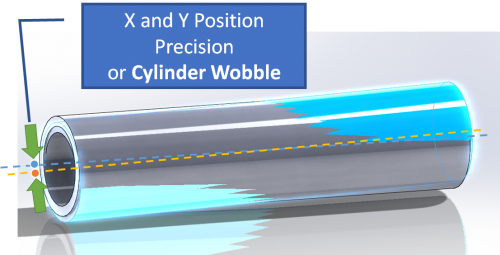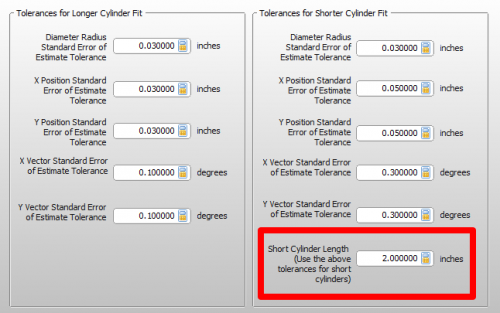VTube-LASER Cylinder Fit Tolerances
|
Why Do We Need Cylinder Fit Tolerances?
|
VTube-LASER uses scanned surface points to calculate tube centerlines. |
The Cylinder Fit Data Window Reports How Well the Centerline Fits the Surface Data
Cylinder Wobble - The highest of the X or Y values
|
To simplify visualizing the X and Y positions, we say that the highest of the X and Y values is the "cylinder wobble". The cylinder wobble in the example on the right is 0.21 inches - because it is the higher of the two values. |
Cylinder Fit Tolerances
|
VTube-LASER uses tolerance values to decide when to warn you about potentially poor cylinder measurements. |
Default Values
|
The default values are designed as a good starting point in the VTube-LASER setup. They are excellent for quite demonstrations of the software, and work great for tubes that have a lot of deformation in the straights. |
Lower Aerospace-Grade Cylinder Fit Tolerances
|
Aerospace-grade materials are more precise compared to other applications. For aerospace applications, we recommend that you use tighter tolerances like the ones shown here. |
Why Are There Separate Values for Shorter Straights?
|
Math engines cannot calculate short straights as accurately as long straights. This has to do with the nature of cylinder math. It's a common issue with all measuring centers. Because of this, we know that VTube needs to be more patient with when fitting a cylinder centerline when the straight length is below a certain value. |
Other Pages
- Back to VTube-LASER
- Back to VTube-STEP









